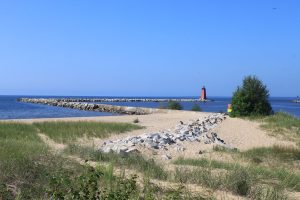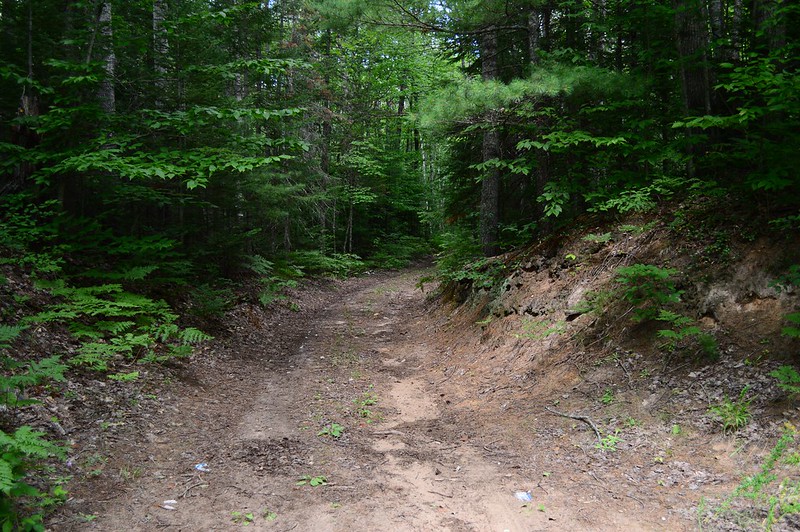There are hundreds of trails to choose from in the great state of Michigan. Whether it’s meandering through the north woods keeping your eyes and ears open for birds, climbing a sand dune, or introducing your kids to hiking, you can find a trail that suits your fitness level and personal interests.
If you’re looking for a place to start, the Pure Michigan Trail and Trail Town Designation Program has several trails to choose from. These are some of the state’s best trails, which are well maintained and chosen for their scenic beauty, offering every visitor a Pure Michigan outdoor experience.
The state’s first rail trail, the Haywire Grade Trail, runs 33 miles and has been a recreation trail since 1970. Before that time, it was part of the Manistique & Northwestern Railroad that was completed in 1898. The purpose of the railroad was to haul white pine timber from logging camps to lumber mills in Manistique.
2020 is the 50th anniversary of the trail’s designation as a recreation trail, so this historic and beautiful trail is worth a visit. The surface is a mix of sand, gravel, and coarse limestone, so if you’re into fat tire cycling and ATVing, this is a great trail on which to spend part of the day. However, the Haywire Grade Trail is also a favorite for horseback riding and hiking in the summer, and snowmobiling and cross-country skiing in the winter.
What is a rail trail?
A rail trail is a multi-use trail that was converted from an operational railroad that fell into disuse. Many of these railroads were utilized for industries that no longer exist in Michigan, or we do things a different way. They are public pathways through historic areas, which are celebrated as part of our state’s heritage, and a way to spend time outside hiking, biking, ATVing, snowmobiling, or horseback riding. Michigan has the largest network of rail trails in the nation, and the Haywire Grade Trail was the groundbreaking trail that started it all.
Where do I start?
You can access the trail from either Manistique at Intake Park or Shingleton at the Marquette-Manistique ORV Trailhead, which is north off of 94. The Haywire Grade Trail runs between the two. You’ll also pass the town of Steuben, which sits on the Indian River and has a small grocery store if you need refreshments.
What will I see?
Your journey will take you through a second growth forest that is secluded, offering an escape from the real world. It was only half a century ago (logging ceased in 1968) when these woods were the sites of timber towns and crawling with lumbermen. The train would come through, blowing its whistle, and take the fallen virgin pines away for other uses. Since it’s a second growth forest, there is abundant wildlife and wildflowers. You’ll easily be able to find your way as there are easy-to-see mile markers along the route.

Manistique, Michigan, is located on the shores of Lake Michigan.
What can I do in Manistique and Shingleton?
Shingleton is where you can find the northern trailhead. You’ll need to park about a quarter mile from the trail near the Tanglewood Inn and an antique shop. Tanglewood Inn has a bar and restaurant that offers a soup and salad bar every day and everything from burgers to paninis to pizzas to “Treemendous” breakfasts. In Manistique, you can stay outdoors longer and take a stroll along the boardwalk, or you can go fishing at Indiana State Park. There are also plenty of restaurants and shops to visit. You can make a weekend of visiting this area, too. These towns are close to many other big attractions in the Upper Peninsula, including Kitch-iti-kipi, Mackinac City, and Pictured Rocks National Lakeshore.
Other Pure Michigan Designated Trails include: Canada Lakes Pathway – Luce County (2020), Iron Ore Heritage Trail, Marquette County (2019), Leelanau Trail – Leelanau County (2019), Sleeping Bear Heritage Trail – Leelanau County (2019), William Field Memorial Hart-Montague Trail State Park – Muskegon and Oceana counties (2019), Trail 45 Charcoal Grade Trail – Chippewa and Luce counties (2019), Polly Ann Trailway – Oakland County (2019), and Kal-Haven State Park Trail – Van Buren and Kalamazoo counties (2020). For additional information, visit the Michigan DNR website.

